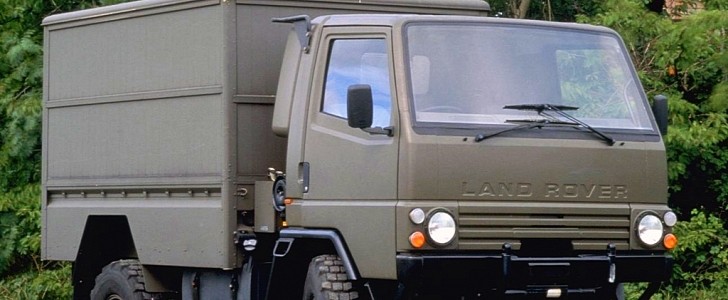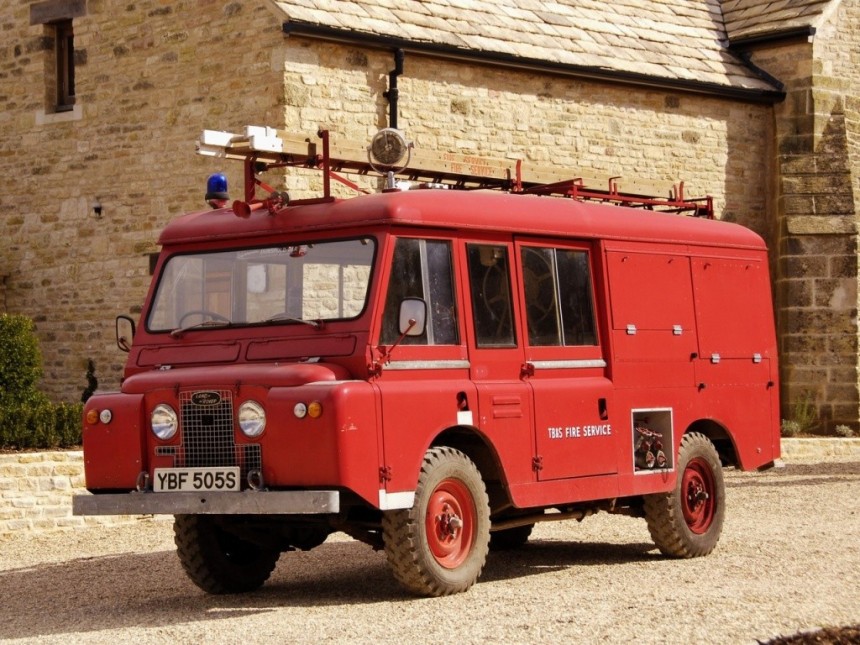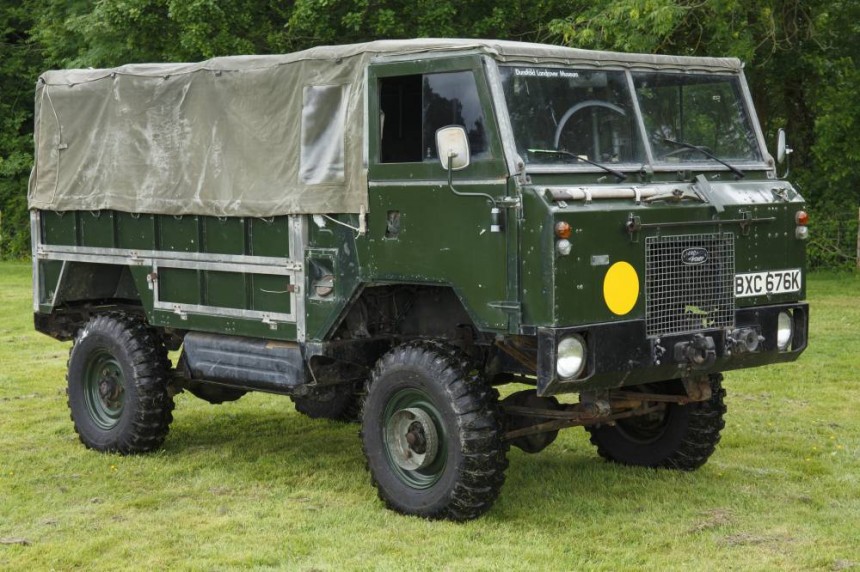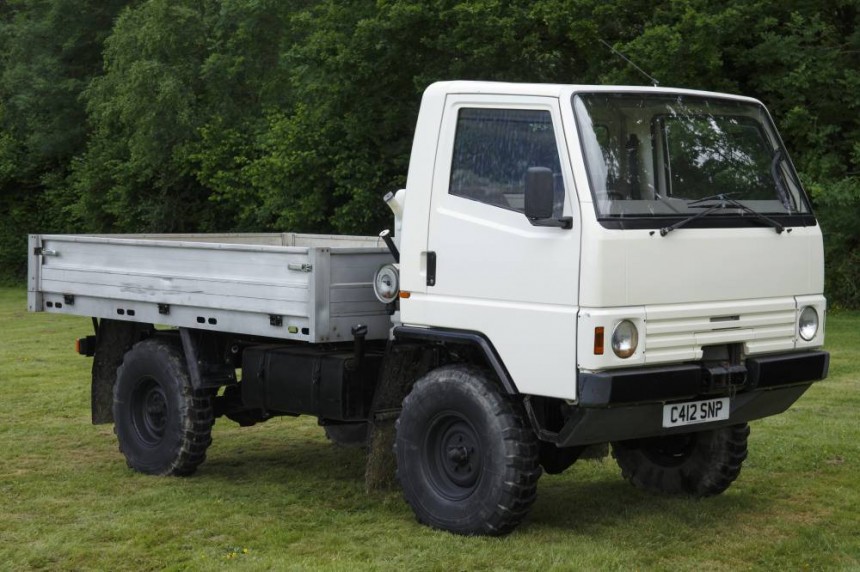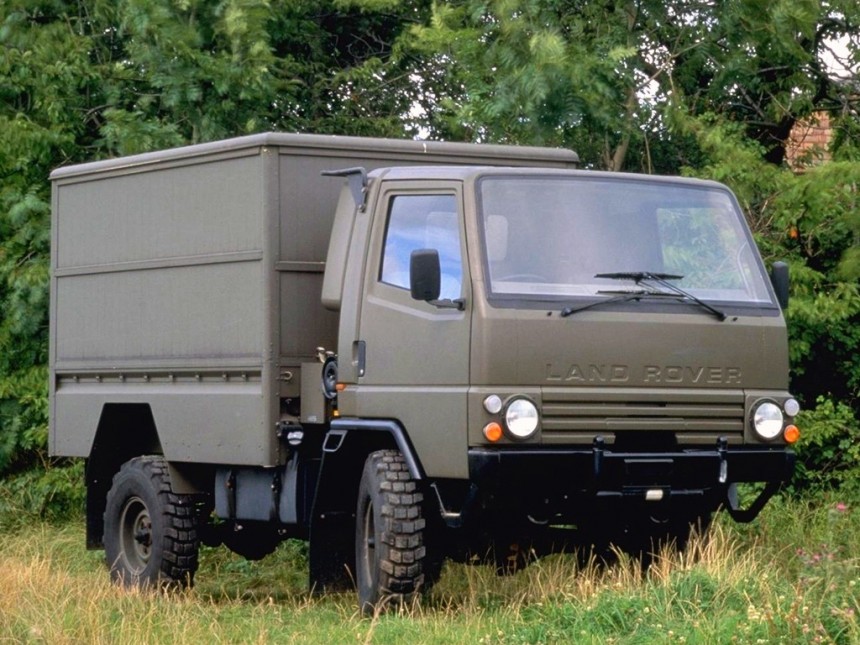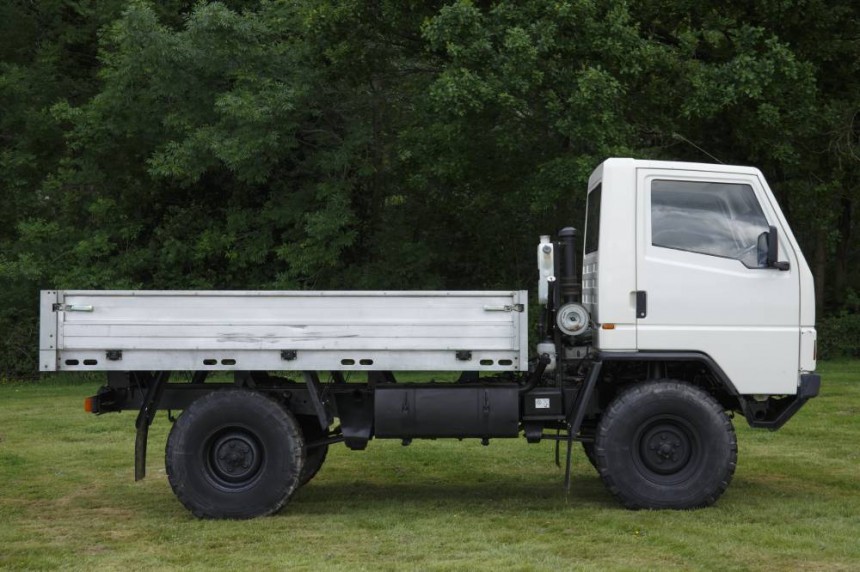When you talk about Land Rover, you usually think about rugged SUVs like the Series models and the Defender or premium haulers of the Range Rover variety. But Land Rover also developed a few forward control (cab over engine) trucks. They're far from famous and the Llama is one of those trucks you probably didn't know existed.
Land Rover's first venture into the cab-over-engine market goes back to the Series IIA FC. Obviously based on the Series IIA (1961-1971), the FC was introduced in 1962. Land Rover built fewer than 2,500 of them and some were used as fire and recovery trucks.
The Brits introduced an updated version, the IIB FC, in 1966. Optionally available with a diesel engine, it was fitted with heavy-duty, wide-track axles and a front anti-roll bar for improved stability. The IIB FC remained in production until 1974.
By that time, Land Rover had already introduced its third cab-over design, the 101 Forward Control. But unlike the IIA and IIB, the 101 was produced exclusively for the British Army and not available to the public (even though it was later offered as military surplus).
The 101 was primarily produced to meet the Army's requirement for a gun tractor and the forward control design was preferred so that the truck would be easier to transport by air. Land Rover began developing the 101 in 1967, but the truck didn't go into production until 1972.
The British company built 101s until 1978, but the trucks remained in service until the 1990s when the British Ministry of Defence replaced them with Defenders and Steyr-Puch Pinzgauer trucks.
Before that happened, Land Rover developed the Llama as a replacement for the 101.
But the Ministry of Defence's decision to replace its fleet of forward control trucks wasn't the only reason that led to the development of the Llama (called 110 Forward Control in official documentation). It also had to do with the restructuring that the British company was going through in the 1980s.
As Rover car production left the Solihull factory, Land Rover closed its plants in Birmingham and brought all manufacturing under one roof. The move led to the creation of the Special Vehicles Division, through which Land Rover wanted to reduce the amount of specialist work it was sourcing out to other companies.
It also wanted a piece of the heavy-duty off-road vehicle market, which at the time was dominated by the Mercedes-Benz Unimog, so the Brits decided to develop a Land Rover capable of carrying larger and heavier loads.
But at the same, Land Rover didn't want to make one from scratch, so it used the then-newly-introduced Defender as a base.
But unlike the 101 Forward Control, which was destined for military use only, the 110 Forward Control was also supposed to spawn a civilian version.
Project Llama started in 1985 with a modified Defender 110 chassis that shared about 85% percent of its components with the SUV. However, it was made of thicker steel. Likewise, the Defender suspension gained unique twin rear springs for a 1.75-ton payload, while the 110 axles were replaced with bespoke units that were 12 inches (305 mm) wider for increased stability.
The fiberglass cab was hinged at the front and tilted forward to allow access to the drivetrain, a design that fixed a big issue with the previous 101 FC. The interior wasn't as spartan either, with most surfaces trimmed in plastic and rubber.
The Llama's cabin also used a wide range of components from other Rover Group vehicles, including the Defender, Austin Metro, and Austin Montego to further reduce costs for civilian production.
Land Rover built about 11 prototypes that were sent to the British Ministry of Defence for testing with the hope of winning a contract. These were fitted with a variety of rear bodies, including standard drop-side beds, fiberglass pods, canvas tops, and eclosed bodies mocked up as ambulances and radio communication vehicles.
But things didn't go as well as Land Rover had hoped. Testing revealed several design flaws, starting with the fact that the Llama was unstable over rough terrain due to its coil-spring suspension and high center of gravity. What's more, the truck showcased poor performance when loaded.
The fact that the Llama came fitted with a gasoline engine (215-cubic-inch / 3.5-liter V8 rated at 110 horsepower) was also an issue, as the Ministry of Defence had recently switched to diesel power for all its vehicles. Consequently, Land Rover built a prototype with the 152-cubic-inch (2.5-liter) turbodiesel four-cylinder it had launched in 1986, but at only 85 horsepower, the oil burner was unacceptably lazy in the Llama.
The Ministry of Defence thus rejected Land Rover's proposal and went with the Reynolds-Boughton RB44, which was based on the Dodge 50 Series light truck produced in the U.K. by Chrysler Europe.
But ironically enough, the RB44's poor reliability prompted the government to overhaul its fleet of 101 Forward Control trucks and keep them in service until the late 1990s.
By the time the British army rejected the Llama, Land Rover had built one civilian prototype on the Solihull production line to test its mass production potential alongside the Defender. And even though the results were satisfying, Land Rover opted to cancel the project in 1988 over fears that the Llama wouldn't have what it takes to compete with the Unimog.
But even though it disappeared into the history books earlier than planned, the Llama left a few traces in the Defender lineup. In 1987, the SUV's warning lights cluster was modified to include a new light to warn the driver if the cab's locking mechanism was opened. Showing a tilting truck cab with a large exclamation mark, the light remained in the Defender's cluster until 1998.
So what happened to all the Llama prototypes? Well, many of them still exist. While some ended up being used as service vehicles at the Solihull plant, others were included in the Dunsfold Collection of Historic Land Rovers in Surrey. The sole production-line Llama is on display at the British Motor Museum in Gaydon, alongside the very first Land Rover and a prototype 101 recovery truck.
To this day, the Llama remains the last cab over engine truck developed by Land Rover.
The Brits introduced an updated version, the IIB FC, in 1966. Optionally available with a diesel engine, it was fitted with heavy-duty, wide-track axles and a front anti-roll bar for improved stability. The IIB FC remained in production until 1974.
By that time, Land Rover had already introduced its third cab-over design, the 101 Forward Control. But unlike the IIA and IIB, the 101 was produced exclusively for the British Army and not available to the public (even though it was later offered as military surplus).
The British company built 101s until 1978, but the trucks remained in service until the 1990s when the British Ministry of Defence replaced them with Defenders and Steyr-Puch Pinzgauer trucks.
Before that happened, Land Rover developed the Llama as a replacement for the 101.
But the Ministry of Defence's decision to replace its fleet of forward control trucks wasn't the only reason that led to the development of the Llama (called 110 Forward Control in official documentation). It also had to do with the restructuring that the British company was going through in the 1980s.
It also wanted a piece of the heavy-duty off-road vehicle market, which at the time was dominated by the Mercedes-Benz Unimog, so the Brits decided to develop a Land Rover capable of carrying larger and heavier loads.
But at the same, Land Rover didn't want to make one from scratch, so it used the then-newly-introduced Defender as a base.
But unlike the 101 Forward Control, which was destined for military use only, the 110 Forward Control was also supposed to spawn a civilian version.
The fiberglass cab was hinged at the front and tilted forward to allow access to the drivetrain, a design that fixed a big issue with the previous 101 FC. The interior wasn't as spartan either, with most surfaces trimmed in plastic and rubber.
The Llama's cabin also used a wide range of components from other Rover Group vehicles, including the Defender, Austin Metro, and Austin Montego to further reduce costs for civilian production.
Land Rover built about 11 prototypes that were sent to the British Ministry of Defence for testing with the hope of winning a contract. These were fitted with a variety of rear bodies, including standard drop-side beds, fiberglass pods, canvas tops, and eclosed bodies mocked up as ambulances and radio communication vehicles.
The fact that the Llama came fitted with a gasoline engine (215-cubic-inch / 3.5-liter V8 rated at 110 horsepower) was also an issue, as the Ministry of Defence had recently switched to diesel power for all its vehicles. Consequently, Land Rover built a prototype with the 152-cubic-inch (2.5-liter) turbodiesel four-cylinder it had launched in 1986, but at only 85 horsepower, the oil burner was unacceptably lazy in the Llama.
The Ministry of Defence thus rejected Land Rover's proposal and went with the Reynolds-Boughton RB44, which was based on the Dodge 50 Series light truck produced in the U.K. by Chrysler Europe.
But ironically enough, the RB44's poor reliability prompted the government to overhaul its fleet of 101 Forward Control trucks and keep them in service until the late 1990s.
But even though it disappeared into the history books earlier than planned, the Llama left a few traces in the Defender lineup. In 1987, the SUV's warning lights cluster was modified to include a new light to warn the driver if the cab's locking mechanism was opened. Showing a tilting truck cab with a large exclamation mark, the light remained in the Defender's cluster until 1998.
So what happened to all the Llama prototypes? Well, many of them still exist. While some ended up being used as service vehicles at the Solihull plant, others were included in the Dunsfold Collection of Historic Land Rovers in Surrey. The sole production-line Llama is on display at the British Motor Museum in Gaydon, alongside the very first Land Rover and a prototype 101 recovery truck.
To this day, the Llama remains the last cab over engine truck developed by Land Rover.
